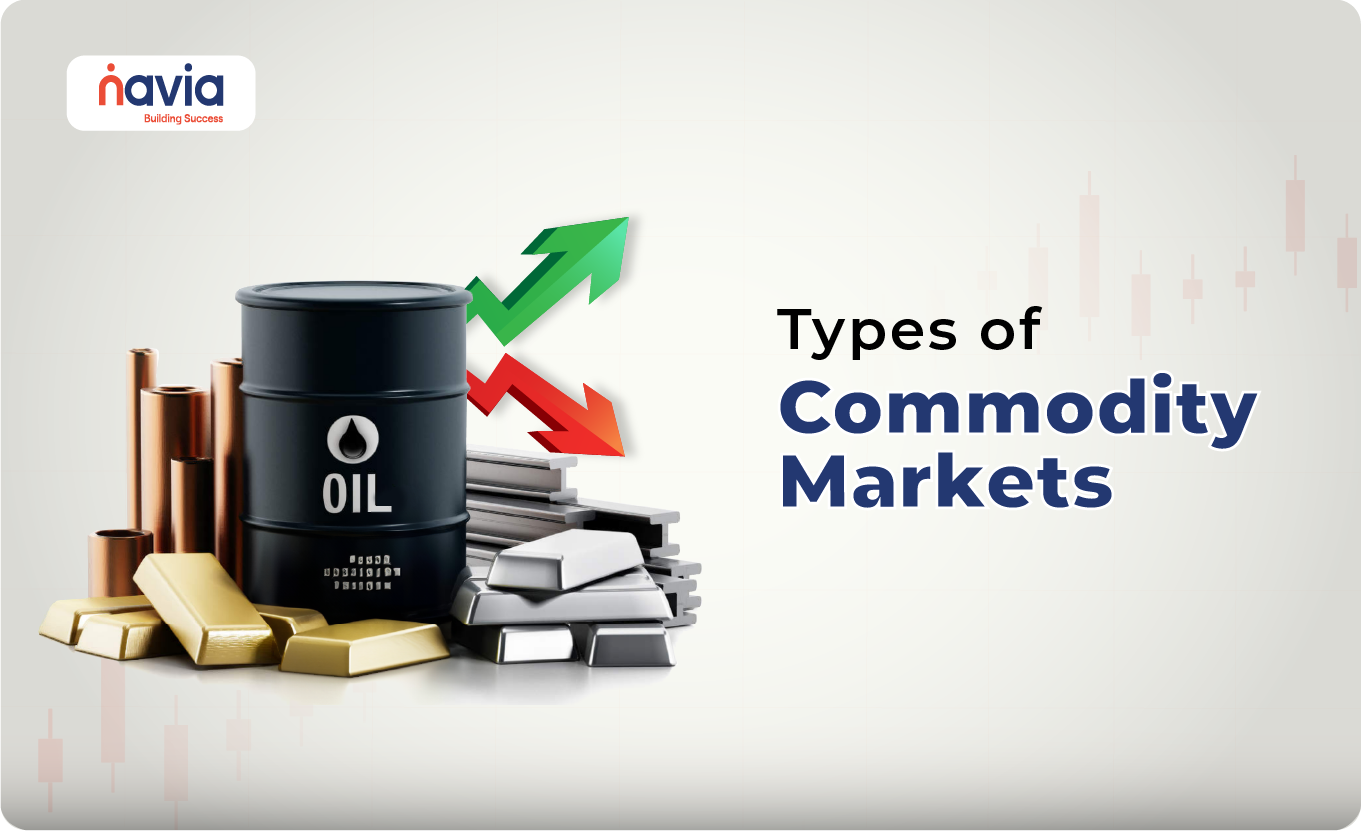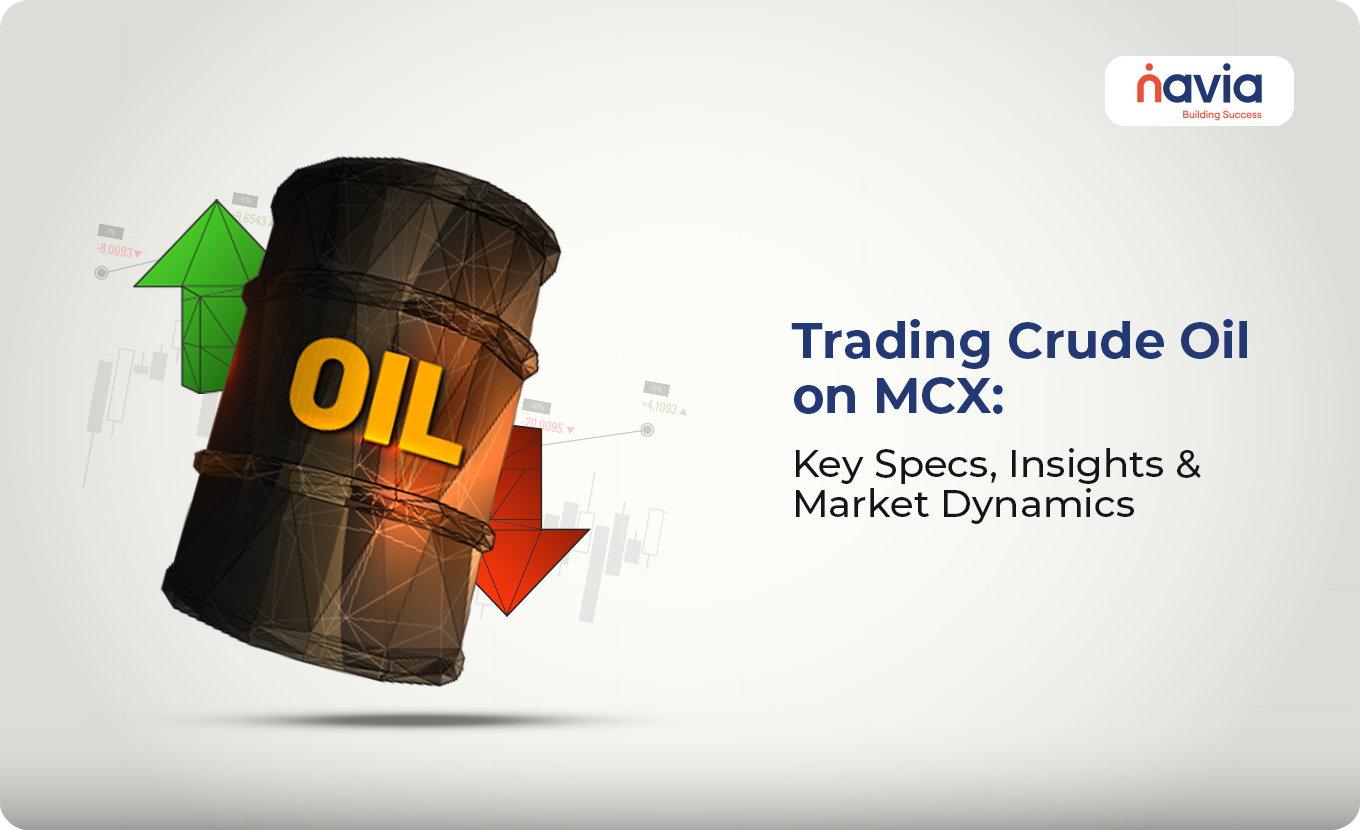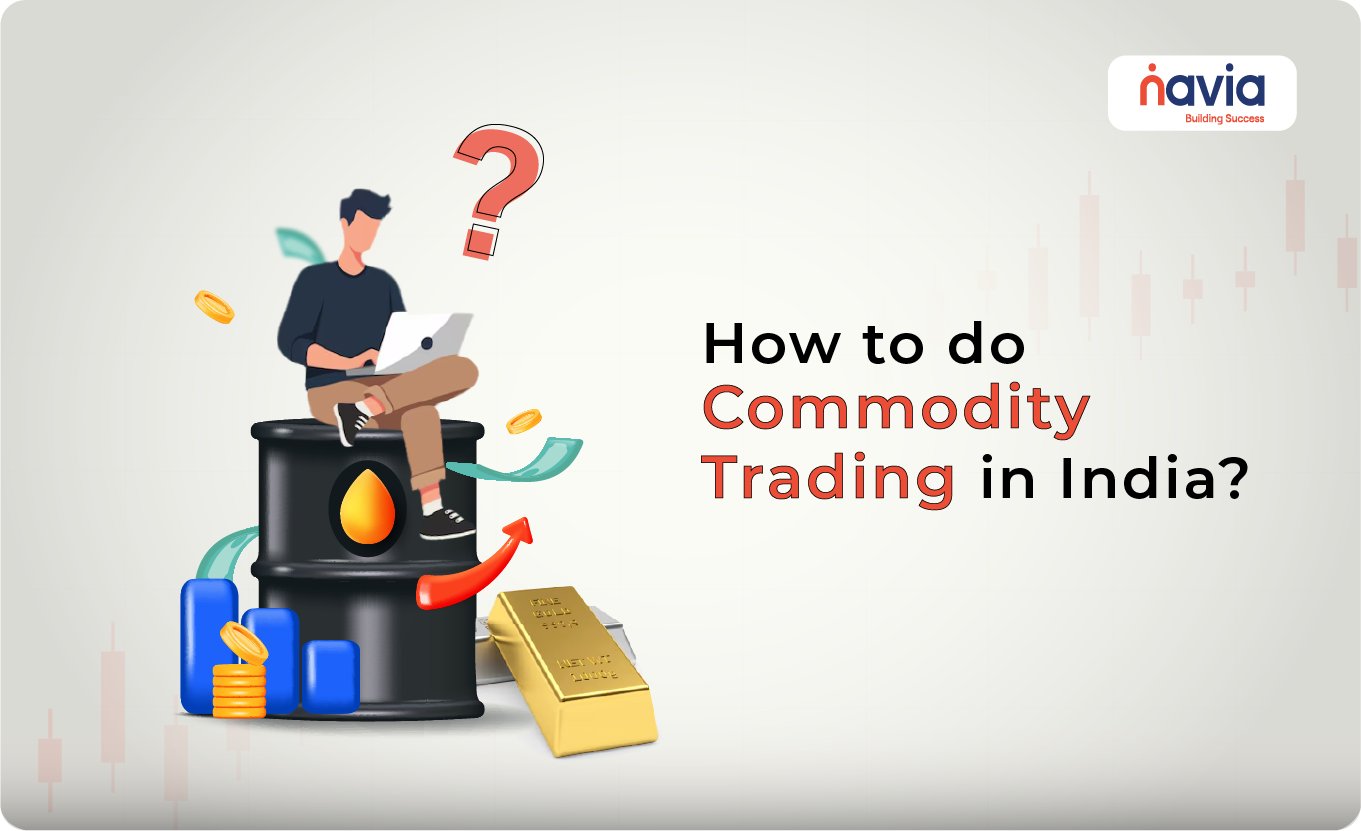Types of Commodity Market: Spot, Futures and More Explained

Have you ever wondered why gold prices fluctuate daily? Or why crude oil prices impact global economies? Whether you’re a beginner in commodity trading or looking to expand your knowledge, understanding the different types of commodity markets is essential for making informed trading decisions.
Commodity markets provide a platform for buying, selling, and speculating on the price of raw materials and primary goods like oil, gold, wheat, and more.
But what are the different types of commodity markets, and how do they work?
What is a Commodity Market?
A commodity market is a financial marketplace where commodities (raw materials or primary goods) are bought and sold. These markets help in price discovery, risk management, and hedging against inflation.
There are two main types of commodity markets:
1. Spot Market (Physical Market) – Where commodities are traded for immediate delivery.
2. Derivatives Market (Futures & Options Market) – Where commodities are traded via contracts for future delivery.
Let’s explore this in detail.
1. Spot Commodity Market (Physical Market)
The Spot Market, also known as the Cash Market or Physical Market, is where commodities are bought and sold for immediate settlement. Transactions happen on the spot, and delivery occurs immediately or within a short period.
Key Features of the Spot Market
✔ Immediate delivery of goods.
✔ Prices fluctuate based on real-time supply and demand.
✔ No contracts for future delivery.
✔ Used for agricultural products, metals, and energy commodities.
Examples of Spot Market Transactions
→ A gold dealer purchasing gold bars at the current market price.
→ A farmer selling wheat directly to a food processing company.
→ A company buying crude oil for immediate use in manufacturing.
💡 Fun Fact: The price of gold and crude oil you see in the news is often based on the spot market!
2. Derivatives Commodity Market (Futures & Options Market)
Unlike the spot market, the Derivatives Market deals with contracts where commodities are traded for future delivery.
These contracts help traders and investors hedge against price fluctuations or speculate on price movements without owning the physical commodity.
Types of Derivatives Markets
a) Futures Market
A Futures Contract is a standardized agreement where a buyer and seller agree to exchange a commodity at a predetermined price on a future date.
Key Features of the Futures Market:
✔ Regulated by major exchanges (e.g., Multi Commodity Exchange – MCX).
✔ Used by traders for hedging and speculation.
✔ Requires margin deposits to maintain positions.
✔ Contracts are standardized (fixed quantity, quality, and delivery date).
Example
A crude oil producer may sell oil futures contracts to lock in a selling price and avoid potential losses due to price fluctuations.
b) Options Market
An Options Contract gives the trader the right (but not the obligation) to buy or sell a commodity at a fixed price before a specific date.
Key Features of the Options Market:
✔ Provides flexibility – traders are not obligated to execute the contract.
✔ Helps manage risk exposure.
✔ Requires a premium payment to enter the contract.
Example
A wheat trader purchasing an options contract to buy wheat at a fixed price in case the market price rises.
3. Spot Market vs. Futures Market – A Quick Comparison
To make it easier to understand, here’s a side-by-side comparison:
| Feature | Spot Market | Futures Market |
|---|---|---|
| Delivery | Immediate | Future Date |
| Contract Type | No Contract | Standardized Contracts |
| Purpose | Buying/Selling in real-time | Hedging & Speculation |
| Example | Farmer selling wheat today | Crude oil futures contract |
📌 Takeaway
The spot market is ideal for those needing immediate access to commodities, while the futures market helps in risk management and speculation.
4. Domestic vs. International Commodity Markets
Commodity markets can be categorized based on their operational scale:
a) Domestic Commodity Market
✔ Operates within a single country.
✔ Prices are influenced by local demand, supply, and regulations.
✔ Example: India’s Multi Commodity Exchange (MCX).
b) International Commodity Market
✔ Facilitates global trade of commodities.
✔ Prices are impacted by international trade policies, currency fluctuations, and geopolitical factors.
✔ Example: London Metal Exchange (LME), Chicago Mercantile Exchange (CME).
5. Commodity Markets Based on Commodity Type
India has a well-developed commodity market regulated by the Securities and Exchange Board of India (SEBI). Here’s how different commodity markets operate in India:
Agricultural Commodity Market
✔ Includes wheat, rice, pulses, cotton, spices, sugar, coffee, tea, oilseeds.
✔ Major Exchange: NCDEX (National Commodity and Derivatives Exchange).
✔ Popular Commodities: Turmeric, Jeera (Cumin), Soybean, Cardamom.
Metal Commodity Market
✔ Includes gold, silver, copper, aluminum, zinc, nickel, lead, steel.
✔ Major Exchange: MCX (Multi Commodity Exchange), IBJA (India Bullion and Jewellers Association).
✔ Popular Commodities: Gold, Silver, Copper, Zinc, Aluminum.
Energy Commodity Market
✔ Includes crude oil, natural gas, coal, electricity.
✔ Major Exchange: MCX (Multi Commodity Exchange).
✔ Popular Commodities: Crude Oil, Natural Gas, Coal.
Livestock and Meat Commodity Market
✔ India does not actively trade in livestock on commodity exchanges.
✔ Meat exports (buffalo, poultry, seafood) are significant.
✔ Regulated by: APEDA (Agricultural and Processed Food Products Export Development Authority).
✔ Popular Exports: Buffalo Meat, Poultry, Dairy, Seafood.
Why Understanding the Types of Commodity Markets is Important?
| For New Traders | Helps choose the right market for investment. |
| For Investors | Provides insights into market risks and opportunities. |
| For Businesses | Assists in hedging against price volatility. |
| For Speculators | Enables them to profit from price fluctuations. |
Conclusion and Next Steps
Now that you understand the different types of commodity market, you’re better equipped to start your trading journey with Navia.
3 Key Takeaways on Types of Commodity Markets
1. Two Main Categories: Commodity markets are divided into Spot Markets (instant buying/selling) and Derivatives Markets (Futures & Options for future trading).
2. Why It Matters: Spot markets are used for immediate needs, while derivatives markets help businesses and investors manage risks and profit from price changes.
3. Global Influence: Commodity trading operates on both domestic (MCX, NCDEX) and international (CME, LME) levels, driven by supply-demand, economic trends, and geopolitical factors.
Are you ready to explore commodity trading? Share your thoughts in the in our Feedback below! 👇
Do You Find This Interesting?
DISCLAIMER: Investments in the securities market are subject to market risks, read all the related documents carefully before investing. The securities quoted are exemplary and are not recommendatory. Brokerage will not exceed the SEBI prescribed limit.






